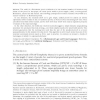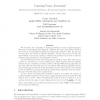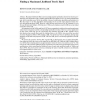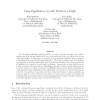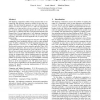2084 search results - page 346 / 417 » Proving Time Bounds for Randomized Distributed Algorithms |
STOC
1999
ACM
15 years 2 months ago
1999
ACM
The width of a Resolution proof is defined to be the maximal number of literals in any clause of the proof. In this paper, we relate proof width to proof length (ϭsize), in both g...
JALC
2007
14 years 9 months ago
2007
We determine the complexity of learning problems for unary regular languages. We begin by investigating the minimum consistent dfa (resp. nfa) problem which is known not to be app...
JACM
2006
14 years 9 months ago
2006
Abstract. Maximum likelihood (ML) is an increasingly popular optimality criterion for selecting evolutionary trees [Felsenstein 1981]. Finding optimal ML trees appears to be a very...
IM
2007
14 years 9 months ago
2007
A local graph partitioning algorithm finds a cut near a specified starting vertex, with a running time that depends largely on the size of the small side of the cut, rather than...
193
click to vote
POPL
2008
ACM
15 years 10 months ago
2008
ACM
Self-adjusting computation enables writing programs that can automatically and efficiently respond to changes to their data (e.g., inputs). The idea behind the approach is to stor...
